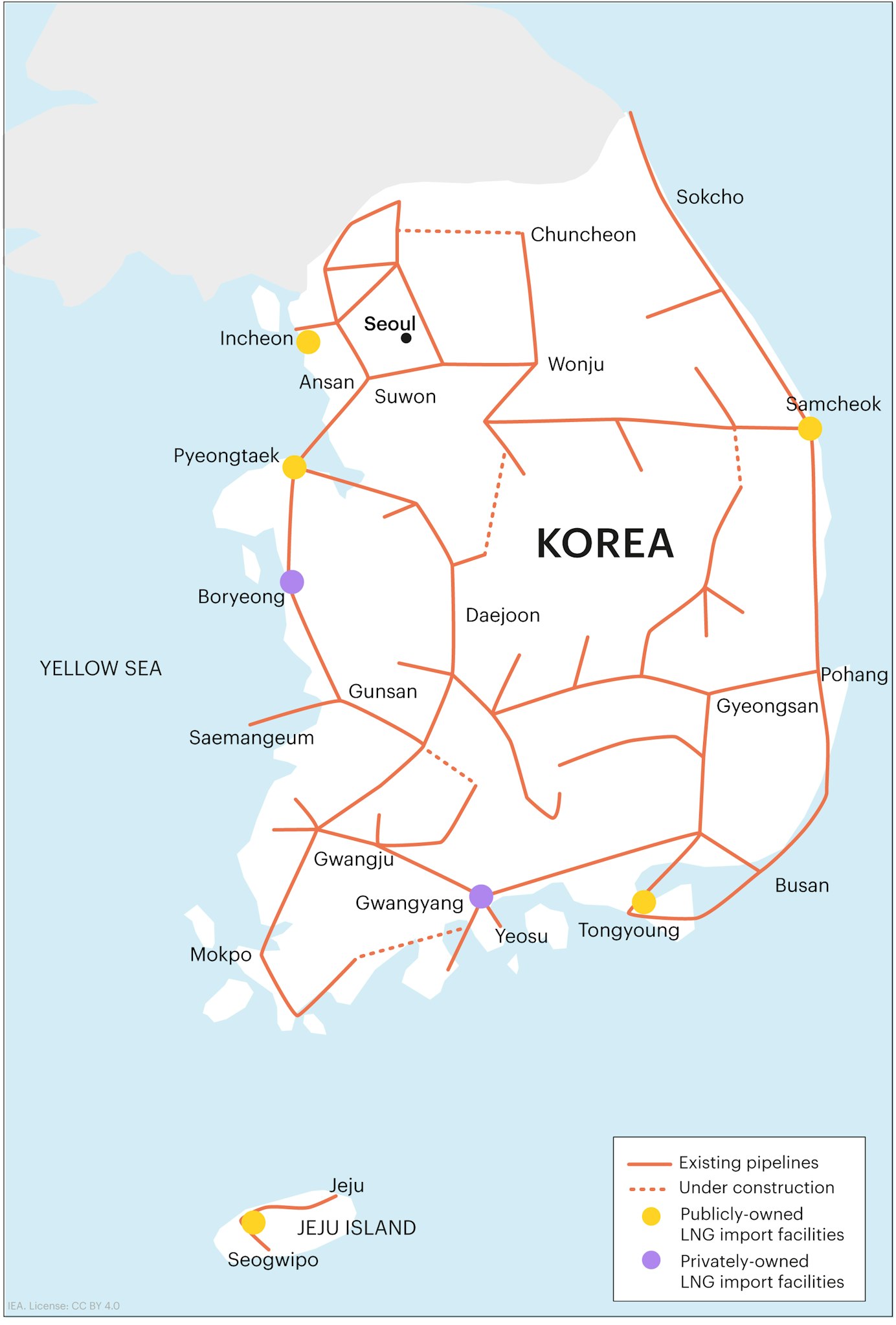Korea Natural Gas Security Policy
This report is part of Natural Gas Security Policy
Natural gas overview
The Ministry of Trade, Industry and Energy (MOTIE) has overall responsibility for maintaining the security of natural gas supplies in Korea and would take the lead role in a gas emergency situation alongside KOGAS, a publicly-owned natural gas company established by the Korean government. KOGAS holds emergency gas reserves which can be released to meet demand when supply is constrained while demand restraint measures and fuel switching can be utilised once emergency stocks reach low levels.
Natural gas accounts for a significant proportion of Korea’s energy mix with consumption on an upward trajectory for over two decades. Gas consumption is set to grow further due to government plans to increase gas-fired power generation as a partial replacement for coal. With limited domestic reserves, the vast majority of Korea’s gas consumption is imported through seven liquefied natural gas (LNG) import terminals.
Natural gas infrastructure
Networks: transmission and distribution
Korea’s domestic gas pipeline transmission network is bi-directional and is owned and operated by KOGAS. The gas pipeline network connects the LNG receiving terminals, storage tanks and large consuming areas. Most of the gas pipelines were constructed to form a circle-shaped network and are bi-directional to improve security of supply.
LNG terminals and interconnections
Korea has no international gas pipeline connections at present and imports natural gas exclusively as LNG. It is one of the most significant importers of LNG in the world. There are seven LNG import terminals in total; six on the main land and one in Jeju Island. KOGAS operates five of the LNG terminals (Pyongtaek, Incheon, Tongyeong and Samcheok, Jeju). Two LNG import terminals are privately owned; Pohang Iron and Steel Company (POSCO) and K-Power jointly own the Gwangyang regasification facility located on the southern coast. A terminal at Boryeong, in the north western region, is owned by a joint venture between GS Energy and SK E&S.
Natural gas net imports in Korea, 2000-2021
OpenKorea has imported United States LNG since 2016, as part of its endeavour to diversify its gas procurement sources, and became the largest importer of United States LNG in 2018.
Gas storage facilities
There are no underground gas storage facilities in Korea and gas is exclusively stored in above ground tanks in the form of LNG.
The five LNG terminals operated by KOGAS have a total of 74 LNG storage tanks and a storage capacity of 6.56 bcm.
Korea’s natural gas infrastructure, 2022

Gas emergency response policy
Organisation
If there is a natural gas supply disruption, the MOTIE would take the lead.
KOGAS would be in charge of determining the stage of the emergency alert system and report this to the MOTIE.
Korea’s emergency response plan envisages gradual response measures depending on the severity of the crisis, including securing additional gas, demand reduction, and fuel switching.
Production surge of natural gas is not applicable in Korea since the domestic production from its only offshore gas field is very small.
Fuel switching
As part of its 13th Plan for Long-term Natural Gas Supply and Demand, published in April 2018, the Korean government has introduced fuel-switching contracts as a policy to encourage the use of alternative fuels instead of natural gas during a gas supply disruption. City gas companies are pursuing fuel-switching contracts for industries with dual boiler facilities.
Obligation for emergency gas storages
The Urban Gas Business Act obligates natural gas stockholding. KOGAS is obliged to hold two types of gas reserves: ‘mandatory inventory volumes’ and ‘preventive reserve volumes.’ Those volumes are respectively seven days and 30 days based on the average daily domestic sales volume of the last 24 months. The total volume is referred as the ‘natural gas inventory.’